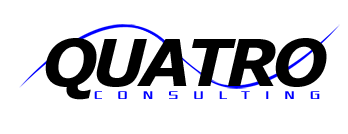Quatro Consulting delivers value by providing commercialization strategy to Aura Nanotechnology which results in Aura reaching the first funding milestone. Aura’s promising dialysis technology was backed by a Phase I SBIR grant from the National Institute of Health.
Grant Abstract: A key need for urea monitoring is a simple and disposable device that can be easily integrated with existing hemodialysis (HD) technology. This proposal aims to demonstrate the feasibility of accurate on-line urea clearance monitoring using nanoengineered colorimetric films deposited directly on the inside surface of short lengths of standard dialysis tubing. The ultimate application will involve the insertion of the disposable sensor within the output loop containing spent dialysate, and using an inexpensive optical device to quantify color shifts in the nanofilms due to urea levels. To test the potential for this approach, three specific aims have been developed. (1). Develop a nanoassembly process to repeatably deposit a stable pH sensing film and urease on the inner wall of standard dialysis tubing. (2). Design, construct and test nanofilm sensor and prototype reader that measure and correlate pH changes at physiological (dialysate) levels of urea. (3). Assess preparation and storage processes to produce sensitive, disposable devices with long shelf-life. It is an anticipated that this proposed work will result in a prototype sensor that is disposable. The ease and cost-effectiveness of fabrication would be very well suited for an application where disposable sensors are required and all steps amenable to scale-up. Aura Nanotechnology will leverage extensive experience in nanofabrication and optical sensors, while working with academic and clinical partners to realize this goal. Successful completion of this Phase I project will put Aura Nanotechnology in a position to perform extensive prototype testing in Phase II, including limited clinical trials. The total number of patients receiving ESRD therapy as of December 31, 2002 was over 430,000. Among these patients, approximately 280,000 were undergoing HD; a significant population of people that have a compromised quality of life and spend 8-13 hours per week receiving therapy. Real-time assessment of urea removal would allow immediate quantification of the delivered HD dose, allowing both clinicians and patients to identify inadequate performance and undertake corrective action prior to the next dialysis session, possibly even during the session. The proposed device would be significant, because it will be cost effective, simple to use, and easy to integrate with the current dialysis processes.
